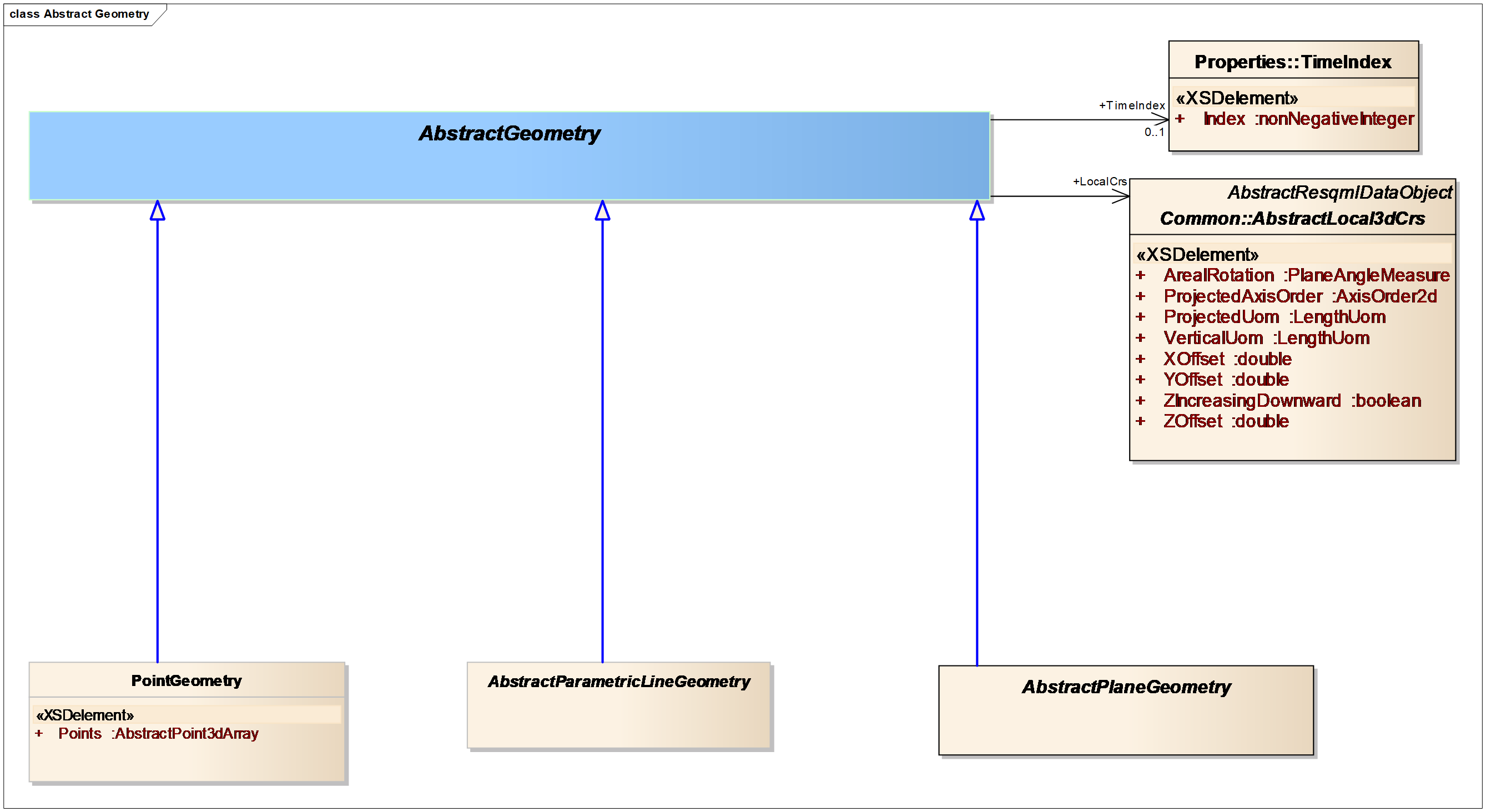7.1 Overview
| Topic Version | 1 | Published | 09/11/2015 | |
| For Standard | RESQML v2.0.1 | |||
RESQML provides descriptions for the geometries of points, lines, and planes (Figure 7.1-1). These descriptions are in the context of a local depth or time 3D coordinate reference system, and to support time varying geometries, a time index. In the following text references to a Z coordinate are appropriate for use in a depth 3D coordinate reference system. If working in time, then Z is replaced by T.

Points are organized into arrays of 3D points, line geometry is parametric, and there are simple descriptions for horizontal or tilted plane geometry.
RESQML provides implicit geometric descriptions for the parametric points on a parametric line. A familiar example from the grid domain is the COORD/ZCORN description of an Eclipse grid coordinate line (Figure 7.1-2), in which a value for Z may be used to infer values for X and Y. RESQML includes vertical, piecewise linear, cubic and minimum-curvature spline parametric lines. Unlike the COORD/ZCORN description, RESQML does not restrict the spline parameter to be depth. This allows support for over-turned geologic structures or for more general relationships.

The use of arrays for points and parametric lines is very similar to that of the RESQML property values. However, unlike properties, which are top-level data objects, geometry only occurs within a representation. As with the property arrays, the dimensions of these arrays are not specified within the schema geometry, but are inherited from their context within a representation.